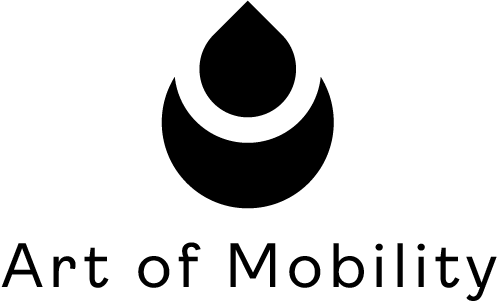
Welcome to the Art of Mobility, your trusted guide in Mississauga for managing and healing rotator cuff issues through physiotherapy. Dealing with shoulder pain and limited mobility can be challenging, but with the right approach, recovery is within reach.
In this comprehensive blog post, we’ll explore the effectiveness of physiotherapy for rotator cuff injuries, dive into beneficial exercises, and discuss the role of massage and other treatments in your journey to wellness. Whether you’re experiencing persistent pain or seeking preventive care, our insights will help you navigate the path to improved shoulder health.
Does Physiotherapy Work for Rotator Cuff Issues?
Yes, physiotherapy in Mississauga can be effective in treating rotator cuff issues. While it may not directly heal a torn rotator cuff tendon, physiotherapy plays a crucial role in pain management and rehabilitation. Physical therapists can provide exercises, manual therapy, and acupuncture to improve flexibility, strengthen the surrounding muscles, and restore the range of motion in the shoulder joint.
They can also assist with correcting posture and biomechanics, which can alleviate stress on the rotator cuff. Physiotherapy is often recommended as a first-line treatment for rotator cuff issues, helping patients avoid surgery and recover their functionality.
What Exercises Are Good for Rotator Cuff Pain?
There are several exercises that can help alleviate rotator cuff pain. These exercises focus on strengthening the muscles of the shoulder and improving stability. Some common exercises include:
- External Rotation: This exercise involves using resistance bands or light weights to externally rotate the arm, targeting the muscles of the rotator cuff.
- Internal Rotation: Similar to external rotation, this exercise helps strengthen the internal rotators of the shoulder.
- Scaption: This exercise involves lifting the arms diagonally in a forward direction, targeting the rotator cuff muscles and improving shoulder stability.
- Wall Push-ups: These modified push-ups involve standing facing a wall and pushing against it at chest level, engaging the muscles of the shoulders and rotator cuff.
It is recommended to consult with a physical therapist or healthcare professional to ensure proper technique and exercise selection based on individual needs.
Is Massage Good for the Rotator Cuff?
Massage therapy can be beneficial for relieving tension and tightness in the muscles surrounding the rotator cuff. It can help improve blood circulation, reduce pain, and enhance relaxation. However, it is important to note that massage therapy alone may not be sufficient for treating rotator cuff injuries or tears.
It is often used in conjunction with other treatment modalities, such as physiotherapy, chiropractic and other interventions as part of a comprehensive approach to managing rotator cuff issues. Therefore, it is important to seek guidance from a qualified healthcare practitioner to determine the most appropriate treatment plan for individual circumstances.
What Are 2 Warning Signs of a Rotator Cuff Tear?
Two warning signs of a rotator cuff tear include:
- Persistent Pain: Individuals with a rotator cuff tear may experience persistent pain, particularly when attempting overhead activities or while sleeping on the affected shoulder.
- Limited Range of Motion: A noticeable decrease in shoulder flexibility and reduced ability to move the arm freely overhead may indicate a rotator cuff tear.
What Is the First-Line Treatment for a Rotator Cuff Injury?
The first-line treatment for a rotator cuff injury typically involves a combination of conservative approaches, with physiotherapy being at the forefront of management. Physiotherapy focuses on strengthening the surrounding muscles, improving flexibility, and restoring shoulder function.
Other components of conservative treatment may include pain management with medications, activity modifications, and lifestyle changes. In some cases, if conservative treatment does not provide sufficient relief, surgical options may be considered.
How Long Does Physical Therapy Take for Rotator Cuff Injury?
The duration of physical therapy for a rotator cuff injury can vary depending on the severity of the injury, the individual’s progress, and other factors. On average, the duration of physical therapy for rotator cuff injuries may range from several weeks to a few months.
It is important to note that each case is unique, and the treatment duration will be determined by the patient’s specific needs and response to therapy. Regular sessions with a physical therapist, adherence to the prescribed exercise program, and proper self-care are crucial for successful rehabilitation. Therefore, it is important that you find a plan of care that is personalized and tailored to your needs.
Final Words
At Art of Mobility in Mississauga, we understand the complexities of rotator cuff injuries and the importance of personalized care. Our approach to physiotherapy is designed to address your unique needs, ensuring a recovery journey that’s not just about managing pain, but about regaining strength, flexibility, and overall shoulder function.
Remember, each individual’s path to healing is different, and our team is here to support you every step of the way. If you’re struggling with rotator cuff issues, don’t hesitate to reach out to us for a tailored treatment plan that puts your recovery first. Let’s embark on this healing journey together, with the Art of Mobility as your trusted partner in regaining your shoulder health.

Hi, my name is Thusheinth Sivarajah and I am a Physiotherapist and Certified Personal Trainer who completed his Master’s in Physical Therapy program at Queen’s University.Once you get to know me, you’ll realize that there is never a dull moment when you work with me. I am devoted to getting you...
Recent Posts

